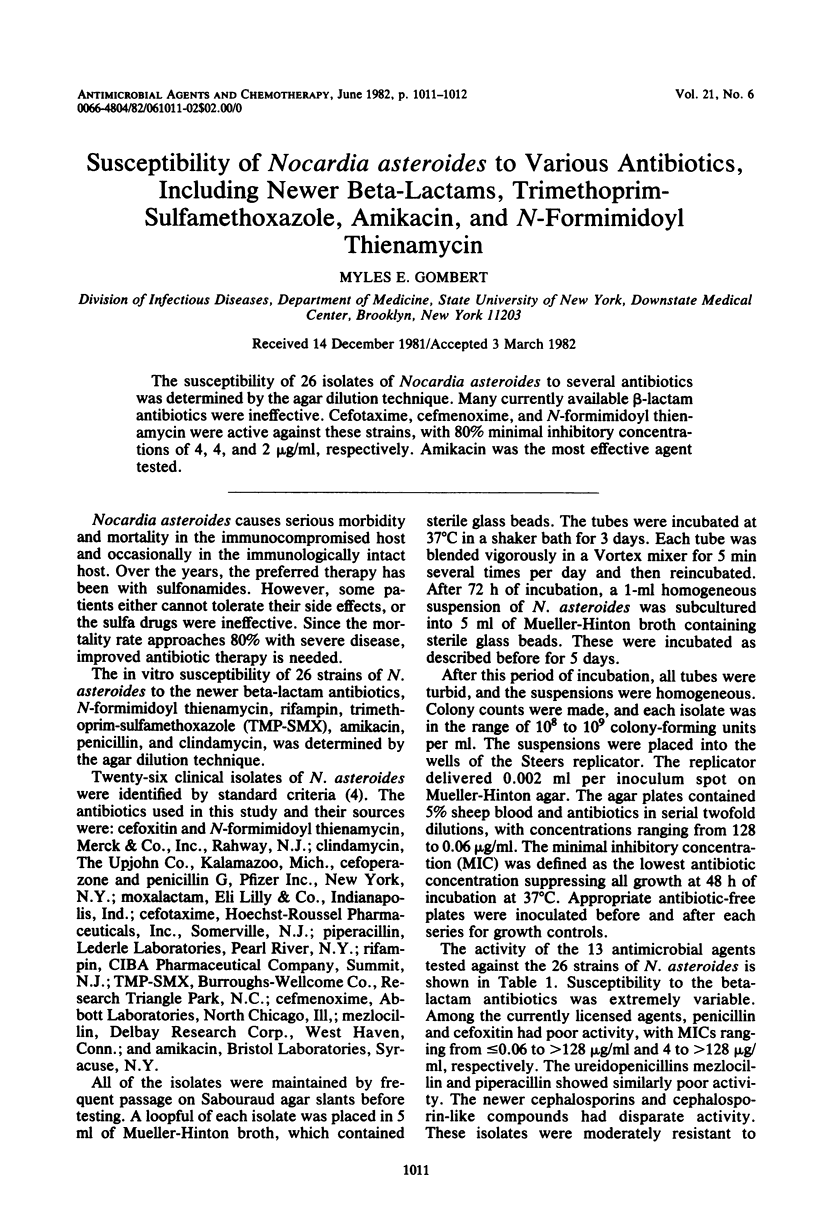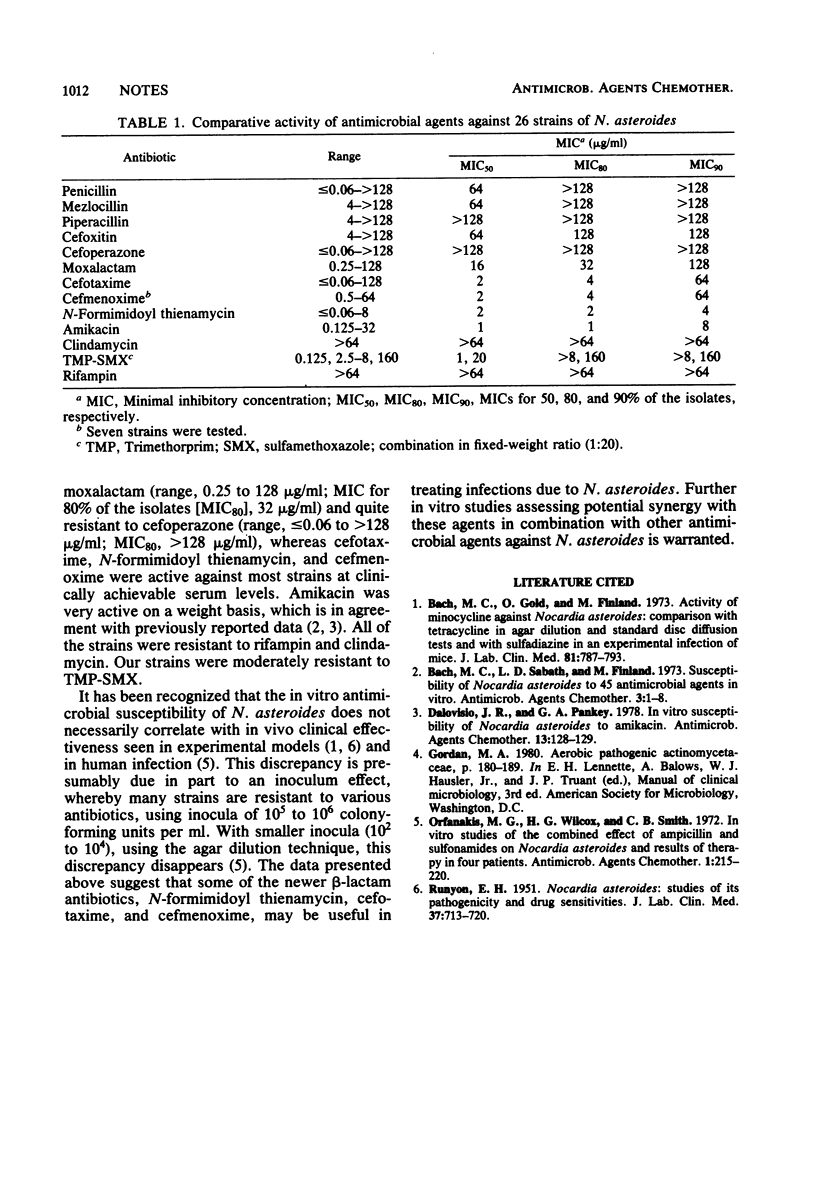Abstract
The susceptibility of 26 isolates of Nocardia asteroides to several antibiotics was determined by the agar dilution technique. Many currently available beta-lactam antibiotics were ineffective. Cefotaxime, cefmenoxime, and N-formimidoyl thienamycin were active against these strains, with 80% minimal inhibitory concentrations of 4, 4, and 2 micrograms/ml, respectively. Amikacin was the most effective agent tested.
Full text
PDF

Selected References
These references are in PubMed. This may not be the complete list of references from this article.
- Bach M. C., Gold O., Finland M. Activity of minocycline against Nocardia asteroides: comparison with tetracycline in agar-dilution and standard disc-diffusion tests and with sulfadiazine in an experimental infection of mice. J Lab Clin Med. 1973 May;81(5):787–793. [PubMed] [Google Scholar]
- Dalovisio J. R., Pankey G. A. In vitro susceptibility of Nocardia asteroides to amikacin. Antimicrob Agents Chemother. 1978 Jan;13(1):128–129. doi: 10.1128/aac.13.1.128. [DOI] [PMC free article] [PubMed] [Google Scholar]
- Orfanakis M. G., Wilcox H. G., Smith C. B. In vitro studies of the combined effect of ampicillin and sulfonamides on Nocardia asteroides and results of therapy in four patients. Antimicrob Agents Chemother. 1972 Mar;1(3):215–220. doi: 10.1128/aac.1.3.215. [DOI] [PMC free article] [PubMed] [Google Scholar]
- RUNYON E. H. Nocardia asteroides; studies of its pathogenicity and drug sensitivities. J Lab Clin Med. 1951 May;37(5):713–720. [PubMed] [Google Scholar]


